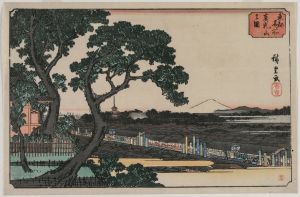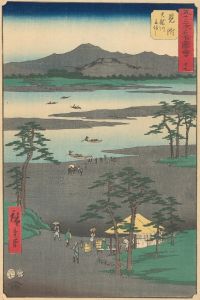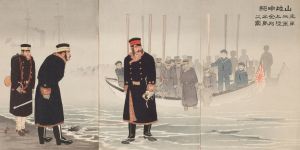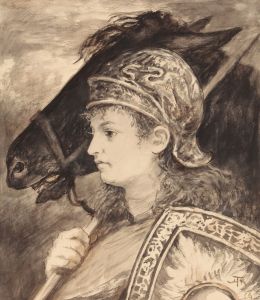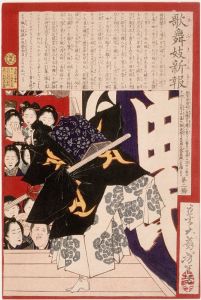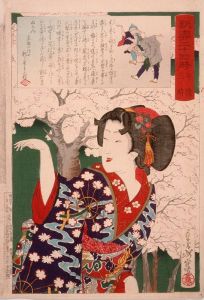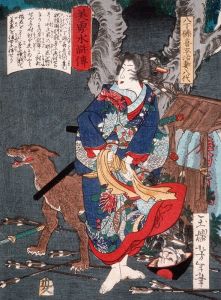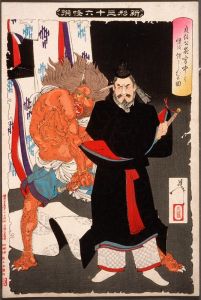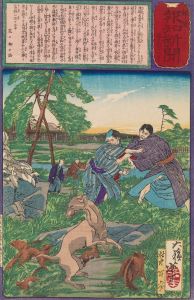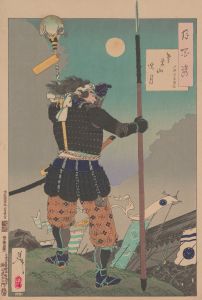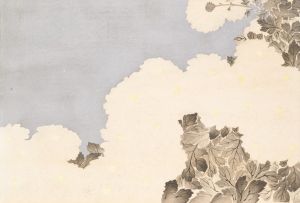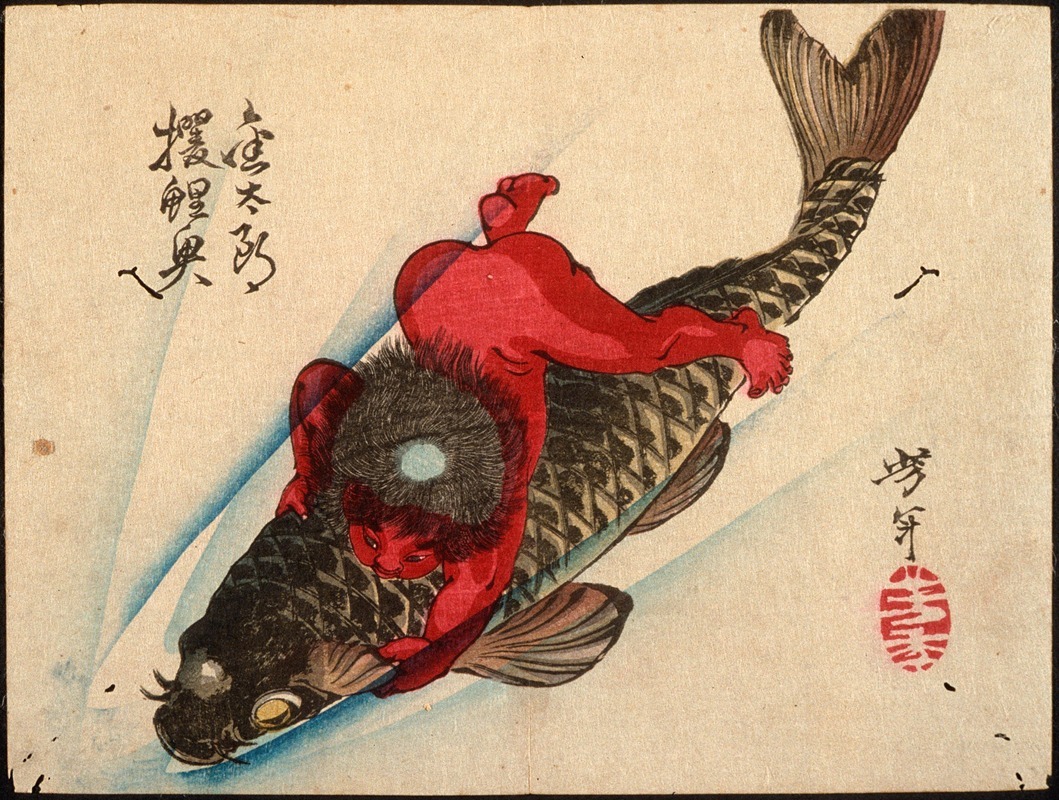
Kintarō Captures the Carp
A hand-painted replica of Tsukioka Yoshitoshi’s masterpiece Kintarō Captures the Carp, meticulously crafted by professional artists to capture the true essence of the original. Each piece is created with museum-quality canvas and rare mineral pigments, carefully painted by experienced artists with delicate brushstrokes and rich, layered colors to perfectly recreate the texture of the original artwork. Unlike machine-printed reproductions, this hand-painted version brings the painting to life, infused with the artist’s emotions and skill in every stroke. Whether for personal collection or home decoration, it instantly elevates the artistic atmosphere of any space.
Tsukioka Yoshitoshi was a renowned Japanese artist of the late Edo and early Meiji periods, celebrated for his innovative and dynamic ukiyo-e woodblock prints. Among his extensive body of work, "Kintarō Captures the Carp" stands out as a notable piece that reflects both his artistic prowess and his deep engagement with Japanese folklore.
"Kintarō Captures the Carp" is part of Yoshitoshi's series that explores the legendary figure of Kintarō, a child hero from Japanese folklore. Kintarō, also known as "Golden Boy," is a popular character in Japanese culture, often depicted as a child of extraordinary strength and bravery, raised by a mountain witch in the Ashigara Mountains. He is frequently shown in the company of animals, with whom he shares a deep bond, and is celebrated for his adventures and feats of strength.
In this particular artwork, Yoshitoshi captures a moment of dynamic action and mythological significance. The print depicts Kintarō wrestling with a giant carp, a scene that symbolizes strength, courage, and the harmonious relationship between humans and nature. The carp, a symbol of perseverance and determination in Japanese culture, is rendered with intricate detail, showcasing Yoshitoshi's skill in capturing the textures and movement of the water and the fish.
Yoshitoshi's use of color and composition in "Kintarō Captures the Carp" is exemplary of his mature style. The vibrant colors and bold lines create a sense of movement and energy, drawing the viewer into the scene. The composition is carefully balanced, with Kintarō's figure dominating the foreground, emphasizing his strength and the central action of the narrative. The background, often featuring elements of the natural world, provides a serene contrast to the dynamic struggle in the foreground.
This print, like many of Yoshitoshi's works, reflects the transitional period in which he lived. The late 19th century was a time of significant change in Japan, as the country opened up to Western influences and underwent rapid modernization. Yoshitoshi's work often bridges traditional Japanese themes and techniques with new ideas and styles, making his prints a valuable record of this cultural transformation.
"Kintarō Captures the Carp" is also significant for its reflection of Yoshitoshi's personal artistic journey. Throughout his career, he faced numerous challenges, including mental health struggles and the decline of the ukiyo-e tradition in the face of modernization. Despite these difficulties, Yoshitoshi remained dedicated to his craft, and his later works, including this print, are often seen as a culmination of his artistic achievements.
Today, Tsukioka Yoshitoshi is regarded as one of the last great masters of the ukiyo-e tradition. His works, including "Kintarō Captures the Carp," continue to be celebrated for their technical skill, emotional depth, and ability to capture the spirit of Japanese folklore and history. This print remains a testament to Yoshitoshi's enduring legacy and his contribution to the art world, both in Japan and internationally.





